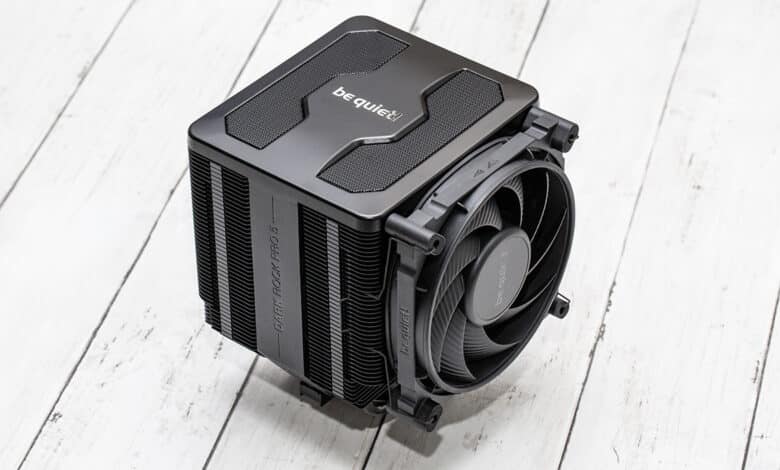
The be quiet! Dark Rock Pro family goes back to the first model from 2011 with the original Silent Wings fans. It continued with the second version in 2012 with the Silent Wings 2, where the concept with two fans of different sizes was used for the first time. The third edition came in 2014 and the fourth generation was launched in 2018 with the Silent Wings 3. Now that the be quiet! Silent Wings 4 were launched on the market last year, it was only a matter of time before the upper-class air coolers followed suit with these models. Apart from the pure evolution, however, there are also major changes to the design and technology with this model. We take a look at all of this in the be quiet! Dark Rock Pro 5 test!
Specifications
| Size | 119.5 x 136 x 168 mm |
| Fan speed | 1700 RPM (135 mm) / 2000 RPM (120 mm) |
| Intel socket compatibility | 1150 / 1155 / 1151 / 1200 / 1700 |
| Socket compatibility AMD | AM4 / AM5 |
| Heatpipes | 7x 6 mm |
| Material | Aluminum with black ceramic coating |
| Weight | 1.29 kg |
| Theoretical maximum cooling capacity | 270 W |
| Guarantee | 3 years |
| Price | € 114.90 * |
Packaging and scope of delivery
- Black, clear packaging
- Good protection of the cooler and the individual parts
- Mounting material for all current mainstream sockets
be quiet! has remained true to itself with the packaging – the box is black and clear, without superfluous advertising slogans. The box of the be quiet! Dark Rock Pro 5 naturally contains the cooler itself, which is held in place by soft foam. On the other hand, there is also the necessary assembly material, as well as clear instructions, a very small tube of thermal paste and the iconic be quiet! screwdriver, which is inserted crosswise into the foam. But there is only foam around the cooler, there are also other parts between the individual parts of the cooler. There is a slightly thicker strip under the magnetic cover and two foam strips under the bracket with the fan, which also need to be removed. Last but not least, the lettering on the top is covered with a strong protective film that sticks relatively strongly.
The mounting material can be found for current Intel and AMD sockets from the mainstream sector. The be quiet! Dark Rock Pro 5 is therefore not suitable for Threadripper or LGA 2011. Older sockets such as AM3 or LGA 775 are also not natively supported, but realistically, hardly anyone will buy a new high-end cooler for an ancient system.
Design
- All black finish
- Fluid design without conspicuous mounting parts
Some elements were recurring in previous generations. What has remained the same is that the be quiet! Dark Rock Pro 5 is still a dual-circuit air cooler with the concept of two different fan sizes that has been used since the second generation. These are a 120 mm fan in the front and a 135 mm fan in the middle.
However, whereas the previous generations used exposed brackets to mount the fans and the fin cover above each end of the heatpipes had a raised cover, the design of the be quiet! Dark Rock Pro 5 is now visually cleaner. The front fan is still mounted with a bracket, but this is almost invisible. The middle Silent Wings 4, on the other hand, is no longer noticeable as a fan from the side and has an adapted frame that gives the whole cooler a more flowing look. The fin cover, which is the part you are most likely to look at, is also much smoother in appearance in this edition.
As was already the case with the be quiet! Dark Rock Pro 4, the be quiet! Dark Rock Pro 5 is also completely black – fins, fan, brackets, heatpipes. However, the orange lettering on the fan, which has clashed with some color concepts, has now also been removed, especially as the focus on the look of the systems has increased significantly in recent years. The be quiet! Dark Rock Pro 5 is now ideal for “blackout systems”. But it can also be combined with other colors.
Workmanship
- High-quality workmanship and robust material
- Premium be quiet! Silent Wings 4 fans are very durable
- Short cables in optimum length for the CPU fan header
In the be quiet! Dark Rock Pro 5 test, the workmanship is very high quality. The surface coating is very clean and the material thickness is decent, so that the fins are not bent despite the greater force required to loosen the middle fan when it is clipped in place. On the other hand, the fins are relatively far apart and there are not as many as with some other coolers. This indicates a high air permeability, which is well suited to airflow fans and is less dependent on high static pressure, although the fans from the be quiet! Silent Wings 4 series can also provide this. However, the cables of these fans on the be quiet! Dark Rock Pro 5 are short, as is desirable for processor coolers, in order to avoid having to hide too much of the fan cable. A sheathing was also dispensed with on this short section.
The contact surface is also made of nickel-plated copper, makes a good impression and distributes the heat to the heatpipes better than with a heatpipe direct contact. The cover is held in place magnetically, but easily falls into the correct position when it is put on. The magnets are strong enough to hold the cover securely in place, but small enough to still easily remove the cover from the be quiet! Dark Rock Pro 5 to access the switch connected to the center fan.
Installation
- Mounting is much easier than on the Dark Rock Pro 4
- A secure hold for all parts without much effort
Compared to the previous model, where you had to hold many small individual parts at the same time, the assembly in the be quiet! Dark Rock Pro 5 test is very simple. Similar to Noctua and DeepCool, two brackets with spacers are screwed directly into the backplate for AMD and a separate backplate is included for Intel, which has to be assembled slightly differently depending on the socket. In any case, the instructions are helpful and easy to understand. Once the brackets are in place, the thermal paste must be applied to the processor, the film must be removed from the contact surface and then the heat sink is fitted and tightened. Where the DeepCool spacers are easier to handle as they screw directly into the backplate and are not secured by the screw that also holds the brackets, tightening the heatsink is much easier with be quiet!
Now the middle fan must be inserted. The lower surface has two holes for the screw heads of the mounting mechanism, which keeps the fan straight and prevents it from vibrating. At the top, the fan frame is connected to the upper slat with a few clips. You have to press quite firmly here, but then the fan sits securely. Now you have to connect the front fan to the middle fan, which can be a little fiddly depending on the working environment. Now simply connect the PWM connector to the CPU header and the small cable can be pushed out of sight.
All in all, a very simple way to attach a cooler. An extreme improvement compared to the previous model, the Dark Rock Pro 4.
Handling
- Two modes switchable (Quiet & Performance)
- This makes it very easy to keep the volume under control
- Proprietary fan system (shape and connection) does not allow replacement with other fans
A new feature of the be quiet! Dark Rock Pro 5 is the switch located under the magnetic fin cover. This can be used to limit the maximum speed of the fans. You can also ignore this function completely and regulate the speed via manual fan control. However, if you don’t want to mess around in the BIOS or install fan control software, you can simply use the switch to limit the maximum speed. This reduces the maximum volume a little – and in many cases the performance is still sufficient and the switch can be flipped again if required. For example, if you want to compensate for the higher room temperature in summer or if you want to replace the processor with a more powerful model.
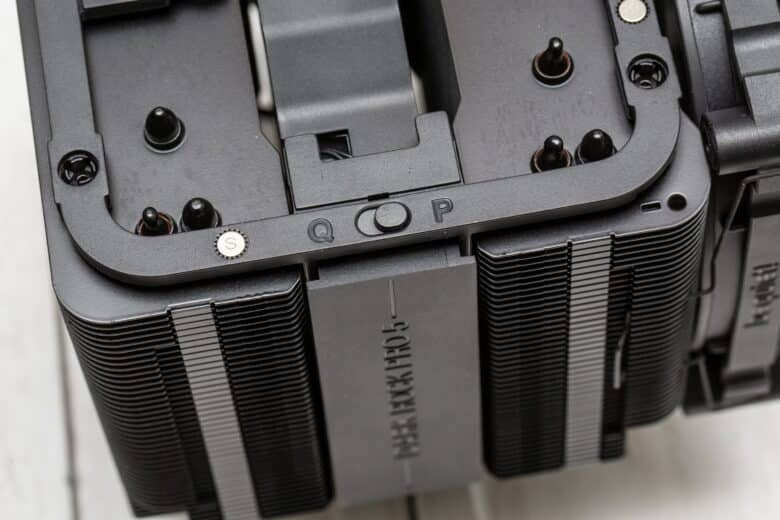
The be quiet! Silent Wings Pro 4, which can be set to three levels, already had a similar option. The DeepCool Assassin IV also has such a switch. The latter also represents a typical competitor with its clean design and in the price range; this is why it is the comparison model in the be quiet! Dark Rock Pro 5 test.
The fans are problematic. At 135 mm, the middle fan is far from any standard and although the front fan corresponds to the typical 120 mm format, the connection is proprietary. And both fans are not labeled “Silent Wings 4”, but “Dark Rock Pro 5”. So you can’t change the fans freely. On the one hand, this is not so bad, because the fans are absolute high-end fans from be quiet! that promise high performance and a very long service life. On the other hand, in the event of a defect (albeit unlikely) outside the warranty period, the only option is to go to the spare parts shop from be quiet!
be quiet! Dark Rock Pro 5 test – the procedure
- Comparison of three coolers in a similar equipment and price class
- Temperature results are given as the difference to room temperature
- Test at maximum performance in both modes and at a uniform volume
The temperature is given as a delta, i.e. the difference to the room temperature. For example, with a measurement of 12 K and a room temperature of 21°C, you have to add these figures together and arrive at a processor temperature of 33°C. The test is performed on an AMD Ryzen 9 5950X, which draws around 145 W of power in Precision Boost Overdrive in Cinebench and around 32 W at idle. This sits in a Fractal Design North and is kept under control by the respective coolers. The idle temperature is measured once by simply leaving the system idle for a while. Then the maximum load is started under Cinebench 2024 and after a warm-up time of 8 minutes, the temperature is measured for one minute and then the average value is adjusted by the room temperature.
The case fans are set to a uniform speed so that no automatic systems have any influence. Arctic MX4 is used as the thermal compound – this is widely available and offers consistent quality.
I test the coolers in three settings. Firstly, the maximum performance of the performance mode, then the maximum performance of the quiet mode and then a robust manual setting, which sits at 36 dB(A) as a measurement at a uniform volume.
be quiet! Dark Rock Pro 5 test – the measurement results
- Smaller results are better
| Cooler | be quiet! Dark Rock Pro 5 | be quiet! Dark Rock Elite | DeepCool Assassin IV |
| Idle temperature P mode | 8.4 K | 9.5 K | 9.4 K |
| Idle temperature Q mode | 8.6 K | 9.7 K | 9.9 K |
| Idle temperature 36 dB(A) | 8.7 K | 10.2 K | 10.3 K |
| Maximum load P mode | 36.9 K | 36.5 K | 37.2 K |
| Maximum load Q mode | 38 K | 37.9 K | 38 K |
| Maximum load 36 dB(A) | 39.2 K | 38.5 K | 39.1 K |
| Volume P mode | 43 dB(A) | 44.7 dB(A) | 44.5 dB(A) |
| Volume Q mode | 37.7 dB(A) | 38.4 dB(A) | 40 dB(A) |
| Speed 36 dB(A) | 1045 RPM | 1195 RPM | 925 RPM |
Objectively speaking, the be quiet! Dark Rock Pro 5 is the quietest cooler and the be quiet! Dark Rock Elite is similarly loud as the DeepCool Assassin IV. Subjectively speaking, however, the sound profile of the be quiet! fans is much more pleasant. This makes them even quieter and more pleasant. With the be quiet! Dark Rock Pro 5, the acoustic difference to the DeepCool Assassin IV is great and I wouldn’t have a headache if it were running at maximum performance. With both be quiet! coolers, the volume always remains pleasant in Q mode.
be quiet! Dark Rock Pro 5 test – result analysis
- High performance of all three coolers
- be quiet! Dark Rock Pro 5 is similarly powerful as the DeepCool Assassin IV, but quieter
- be quiet! Dark Rock Elite is more powerful, but tends to be slightly louder
Okay, realistically speaking, the AMD Ryzen 9 5950X is absolutely no problem for any of the three coolers, despite the high-end factor and not exactly low power consumption of 145 W. This also covers all mid-range CPUs and you can choose the cooler of your choice according to price and design preferences.
In my case, the Dark Rock Pro 5 had slightly better heat dissipation than the Dark Rock Elite when idling without load, but in practice this doesn’t really make a difference as long as there are no huge outliers. As soon as a load is applied to the processors, the Dark Rock Elite takes the lead in terms of performance, but the be quiet! Dark Rock Pro 5 proves to be the quietest cooler in the comparison.
Problems could only arise with overclocked Intel CPUs of the latest generations or with the latest AM5 models, which target 95°C and allow themselves so much energy until they reach this temperature. In this case, both be-quiet! coolers will beat the Assassin IV, although the Dark Rock Elite could still tease a touch more performance out of the AM5 CPUs than the Dark Rock Pro 5. Once you reach the performance-limited models (without X) or mid-range models, this will no longer be a problem. If you have an AM4-based processor, you will always be able to keep it under control with the be quiet! Dark Rock Pro 5.
Speaking of AM5: The new AMD processors have a heat center that is located quite far down on the processor. Noctua, for example, offers special brackets for this, which relocate the pressure point of the contact surface of their coolers accordingly to improve performance, and Arctic also offers solutions for this. The be quiet! Dark Rock Pro 5 shows in the test that it also exerts the greatest pressure on the processor in a fairly centered position. The performance on AM5 processors may suffer somewhat as long as there are no corresponding brackets.
Conclusion
In the be quiet! Dark Rock Pro 5 test, the air cooler proves to be a worthy successor and a significant further development of its predecessor. In terms of performance, it is almost 1:1 at the level of the DeepCool Assassin IV in this test setup, but remains far quieter. The CPU cooler has almost no weaknesses. Only the decision to use proprietary fans may not be to everyone’s taste, but due to the high quality of the fans, this is probably not a practical problem, but rather a theoretical one. Not only are the performance and volume excellent, but the look is also very clean and modern.
Even though the price is quite high, it is roughly on a par with other high-end air coolers, which is hardly surprising. However, if you consider the price of corresponding fans, this is still okay. Sure – you might be able to get one or two other all-in-one water coolers for the money, but the be quiet! Dark Rock Pro 5 has fewer potential sources of error – no pump that could fail, no filling that could clump together, no liquid that could leak. And in terms of noise, you don’t have to worry about a pump or the fan quality.
All in all, the be quiet! Dark Rock Pro 5 is a highly recommended processor cooler.
be quiet! Dark Rock Pro 5
Design
Workmanship
Mounting
Performance
Value for money
95/100
The be quiet! Dark Rock Pro 5 is a very powerful and quiet cooler with good workmanship and easy installation - a well-rounded overall package!



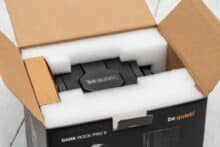
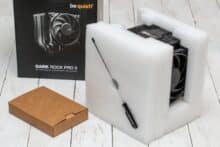

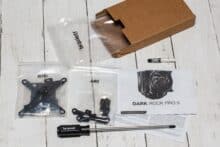
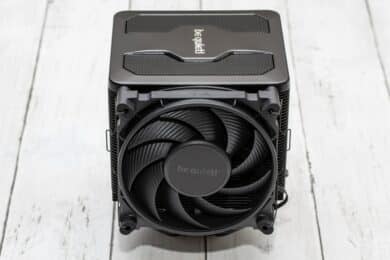
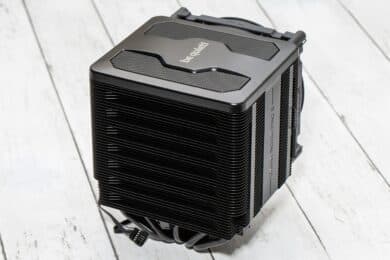


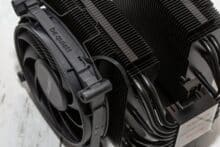
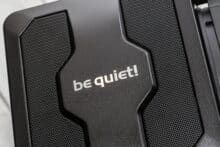

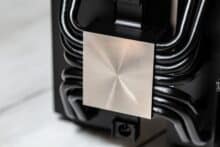
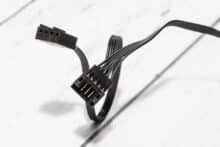
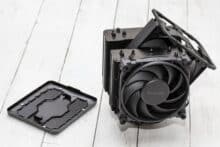
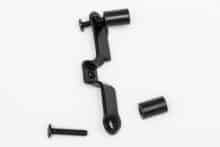
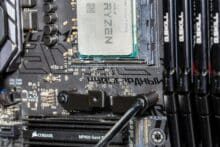


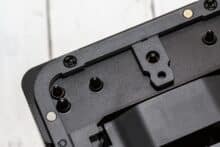
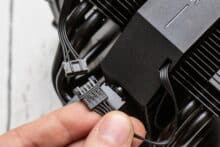
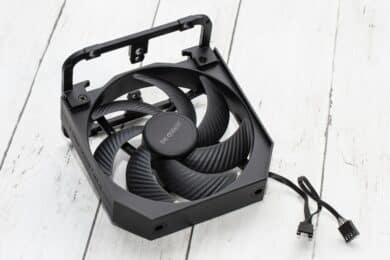
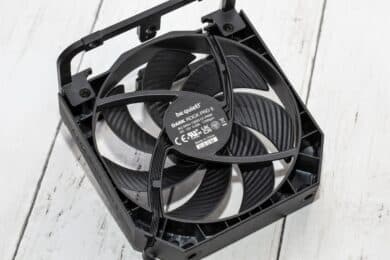
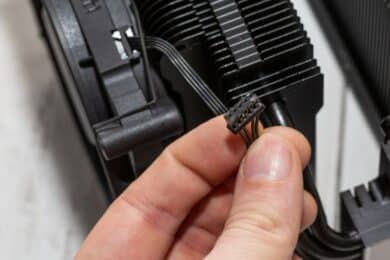
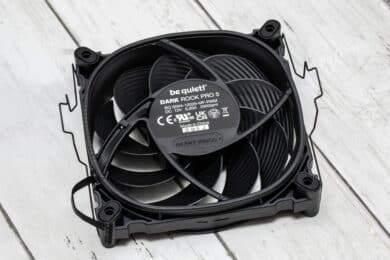

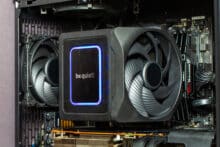

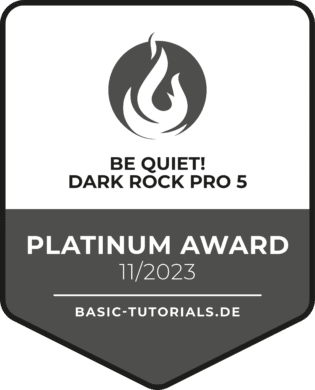
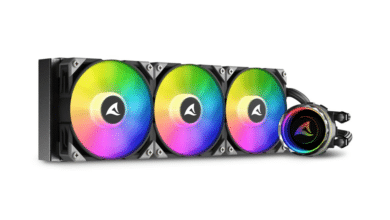
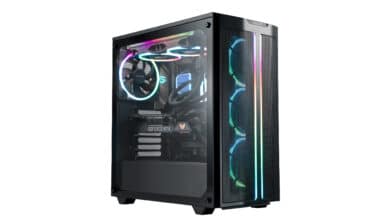

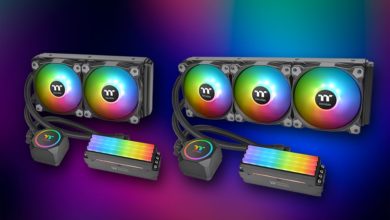
No replies yet
Neue Antworten laden...
Gehört zum Inventar
Beteilige dich an der Diskussion in der Basic Tutorials Community →